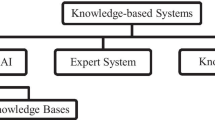Abstract
Quantitative structure–property relationships (QSPR) for the melting point of the polyamides have been determined. All descriptors were calculated from molecular structures at the B3LYP/6–31G(d) level and a QSPR model was generated by multiple linear regression (MLR). The important molecular descriptors for polyamide melting-point temperatures (T m) are the number of benzene rings in the backbone chain, the proportion of methylene and acylamino in the backbone chain, the total molecular energy and the atomic charge for the oxygen atom in the acylamino group. The MLR determination coefficient (r 2) and the standard error of estimation for the model are 0.865 and 21.34 K, respectively. In addition to the nonlinear regression technique, error back-propagation artificial neural networks (BPANN) was used to study the relationships between molecular structures and melting-point temperatures. It is concluded that melting-point temperatures for polyamides can be described by molecular chain rigidity and interchain attractive interactions. The more accurate predicted results were obtained from BPANN.

Experimental vs calculated Tm using BPANN




Similar content being viewed by others
References
Katritzky AR, Lobanov VS, Karelson M (1995) Chem Soc Rev 24:278–287
Bunn CW (1955) J Polym Sci 16:323–343
Wunderlich B (1973) Crystal structure, morphology, defects, macromolecular physics, vol 1. Academic, New York, pp 68
Tadokoro H (1979) Structure of crystalline polymers. Wiley, New York, pp 15
Flory PJ (1956) Proc R Soc London A234:60–73
Gujirati PD, Goldstein MJ (1981) J Chem Phys 74:2596–2603
Nagle JF, Gujirati PD, Goldstein MJ (1984) J Phys Chem 88:4599–4608
Toropov A, Toropova A, Ismailov T, Bonchev D (1998) J Mol Struct: (THEOCHEM) 424:237–247
Firpo M, Gavernet L, Castro EA, Toropov AA (2000) J Mol Struct: (THEOCHEM) 501–502:419–425
Toropov AA, Toropova AP (2002) J Mol Struct: (THEOCHEM) 581:11–15
Katritzky AR, Jain R, Lomak A, Petrukhin R (2001) Perspective 1:261–265
Brandrup J (1999) Polymer handbook. 4th edn. Wiley, New York
Polymer Database: http://polymer.nims.go.jp/PoLyInfo/
Frisch MJ, Trucks GW, Schlegel HB, Scuseria GE, Robb MA, Cheeseman JR, Zakrzewski VG, MonTgomery JA, Jr, Stratmann RE, Burant JC, Dapprich S, Millam JM, Daniels AD, Kudin KN, Strain MC, Farkas O, Tomasi J, Barone V, Cossi M, Cammi R, Mennucci B, Pomelli C, Adamo C, Clifford S, Ochterski J, Petersson GA, Ayala PY, Cui Q, Morokuma K, Malick DK, Rabuck AD, Raghavachari K, Foresman JB, Cioslowski J, Ortiz JV, Stefanov BB, Liu G, Liashenko A, Piskorz P, Komaromi I, Gomperts R, Martin RL, Fox DJ, Keith T, Al-Laham MA, Peng CY, Nanayakkara A, Gonzalez C, Challacombe M, Gill PMW, Johnson BG, Chen W, Wong MW, Andres JL, Head-Gordon M, Replogle ES, Pople JA (2003) Gaussian 03, Revision B.05. Gaussian Inc, Pittsburgh, Pennsylvania
Tang Q, Feng M (2002) Practical Statistics and DPS Data Processing System. Science, Beijing
Wold S, Johanson E, Cocchi M (1993) In: Kubinyi H (ed) 3D QSAR in drug design: theory, method and applications. ESCOM, Leiden, pp 523–550
Acknowledgement
The authors like to thank the financial support from the Scientific Research Fund of Hunan Provincial Education Department (05A002) for the research work.
Author information
Authors and Affiliations
Corresponding author
Rights and permissions
About this article
Cite this article
Gao, J., Wang, X., Yu, X. et al. Calculation of polyamides melting point by quantum-chemical method and BP artificial neural networks. J Mol Model 12, 521–527 (2006). https://doi.org/10.1007/s00894-005-0087-6
Received:
Accepted:
Published:
Issue Date:
DOI: https://doi.org/10.1007/s00894-005-0087-6




